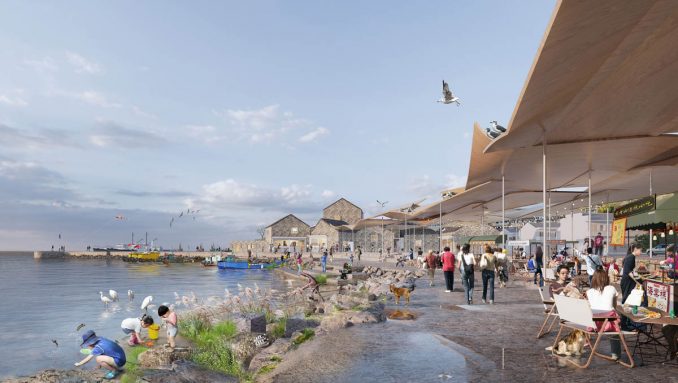
Fish conservation and restoration have become essential topics in recent decades, and artisanal fishing is transitioning towards recreational fishing. The functions of many traditional fishing harbors are becoming incompatible with sustainable fishery development, and fishing villages that were once prosperous due to these harbors are now declining. Using the Dao Dou fishing harbor as a model, this project is a test to revitalize the declining fishing harbor by introducing new initiatives and scenes that provide sustained momentum for the survival and development of the fishing village. The main objective of this planning is to establish an environment-friendly, sustainable common understanding and awareness.
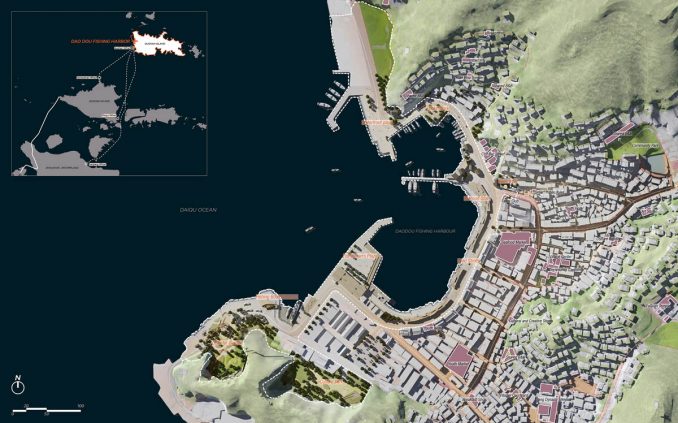
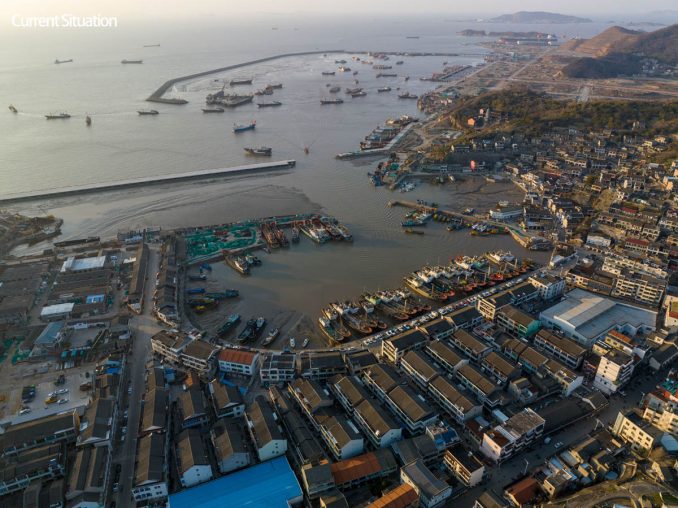
Qushan Island is one of the islands of the Zhoushan Archipelago in China. For thousands of years, people have been engaged in small-scale fishing activities, scheduling fishing based on the “fishing season” in this area. With the continuous development of fisheries, the Dao Dou Fishery Harbor on Qushan Island has gradually gathered more and more settled residents, forming a living settlement. In the 1970s, the Dao Dou Fishery Harbor developed rapidly and flourished. In recent decades, to help bolster wild populations of the endangered species and work toward restoring environmental balance, the state has adopted the ecological resources restoration project based on the implementation of the fishing moratorium, and the use of increased flow and artificial fishing reefs has already begun to show positive results.
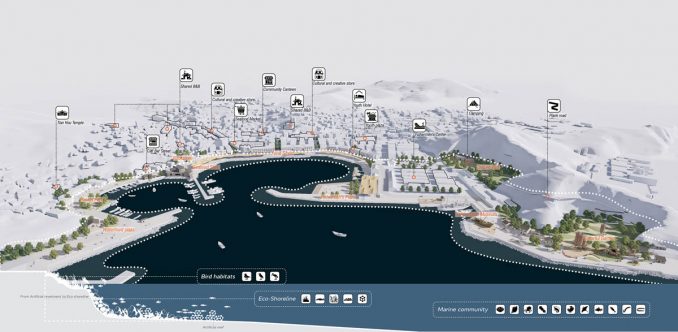
Our team collected data on the development of fisheries, fishing ships, and fishing harbor since 1950, as well as changes in population data, and conducted an in-depth analysis of the rise and fall of Dao Dou. We also worked with town officials to assemble a Technical Advisory Committee, including representatives from state mitigation and harbor management offices.
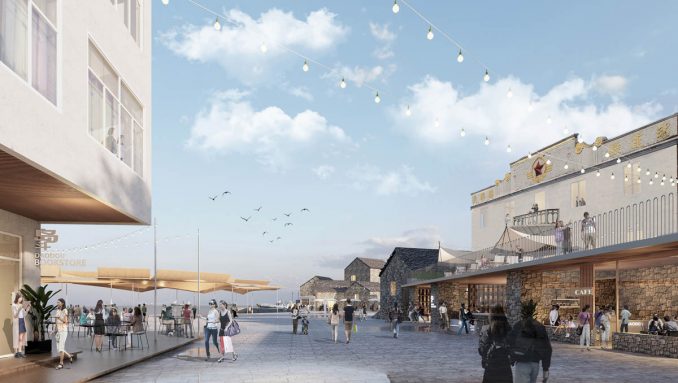
To a mixed-method community engagement, refine the community values heard in many surveys and interviews that matched these goals. At the same time, our team paid close attention to the activities and living conditions of fishermen throughout the year, comprehensively investigated the functional changes of the site and historical buildings during the development and transformation of the fishing harbor, and the impact and damage of human activities on fishery resources and living environment during the process of fishery development. At present, as people eagerly await the return of the sound of the Croceine croaker, The revival plan of Dao Dou is an opportunity to redefine its functions, to evoke people’s memory of the sound of the Croceine croaker, and to establish an awareness of protecting the marine ecosystem.
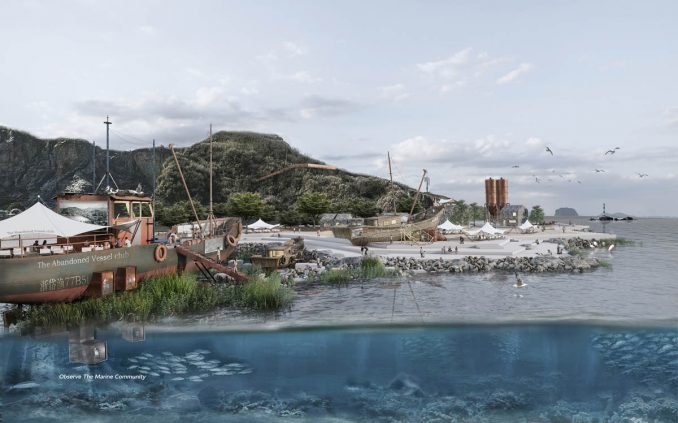
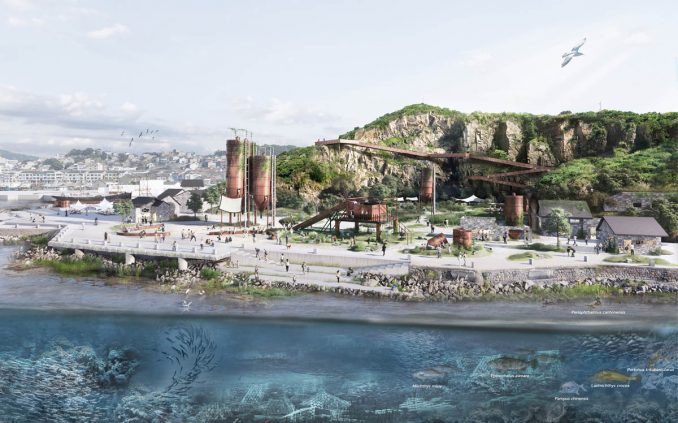
The Revival Plan of Dao Dou is a comprehensive revival plan from multiple perspectives of the people, society, government, and the state to form three dimensions of natural, cultural, and industrial ecology. The fishing harbor will develop from a fishing harbor that separates people from nature into an eco-cultural harbor that connects human beings and marine livelihoods and creates diverse communities of common prosperity.
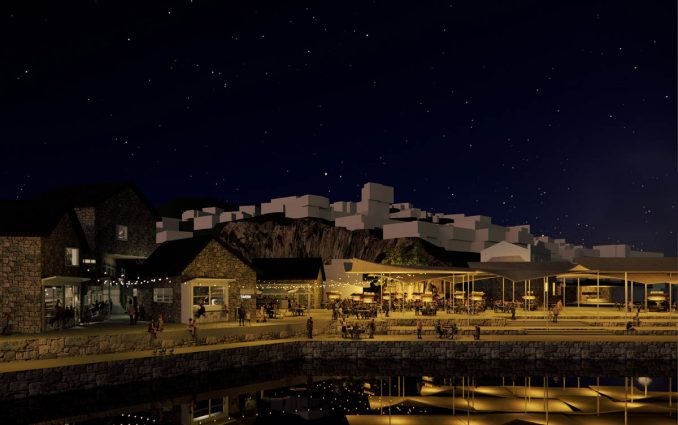
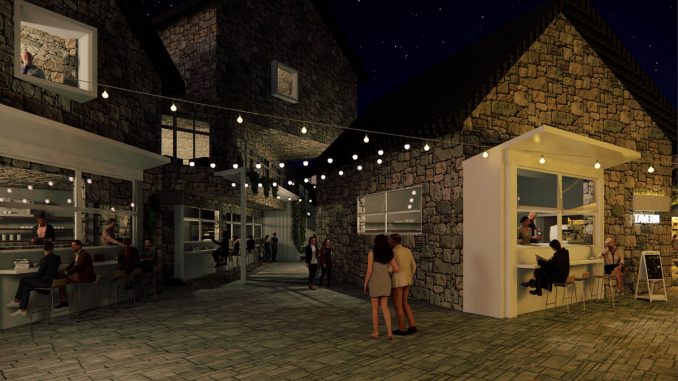
The revival plan of Dao Dou | Antao
Landscape Architect: Antao
Landscape Architect: Yuying Cao, Shanfeng Zheng, Ming Gu, Yeming Hu, Junbo Jiang, Jiangnan Gu
Client: People’s Government of Qushan Town, Daishan County, Zhoushan City, Zhejiang Province, China
Image Credits: Antao
